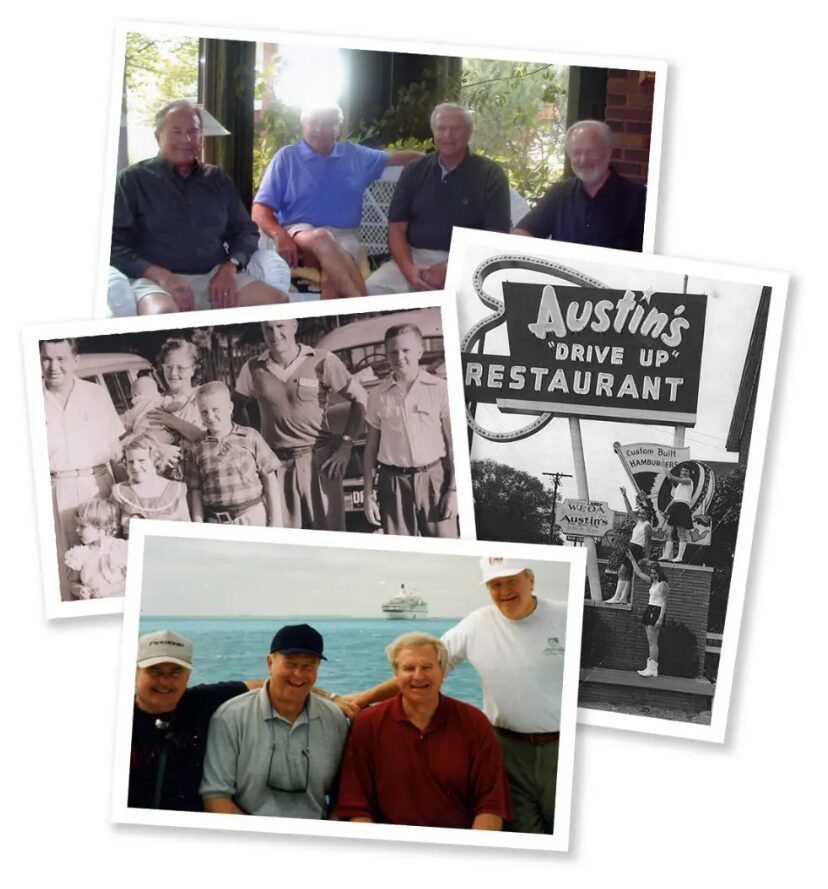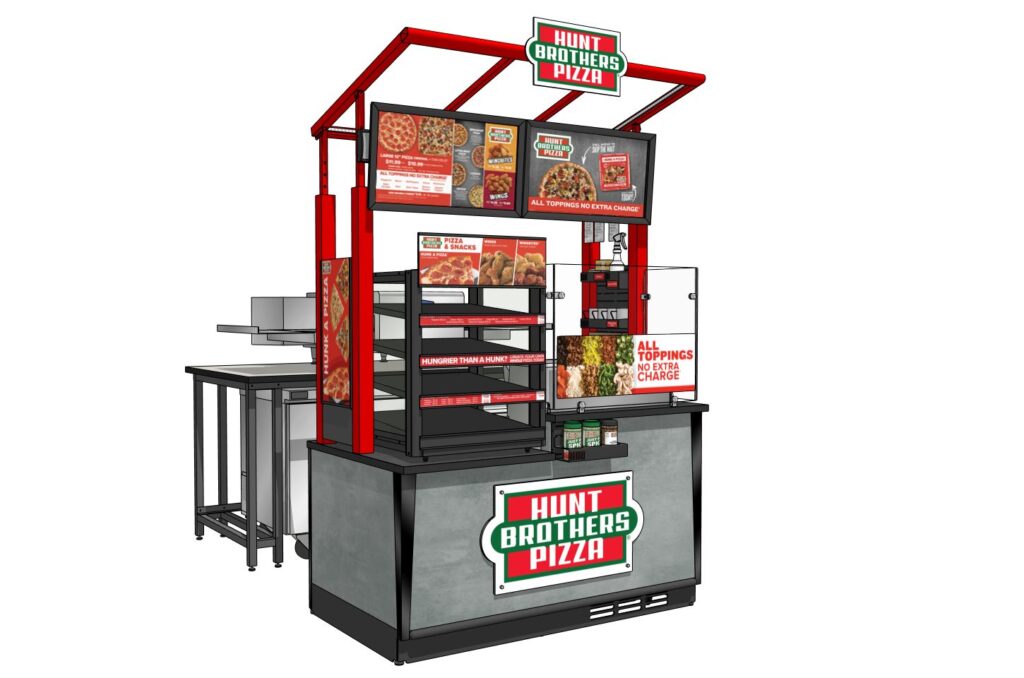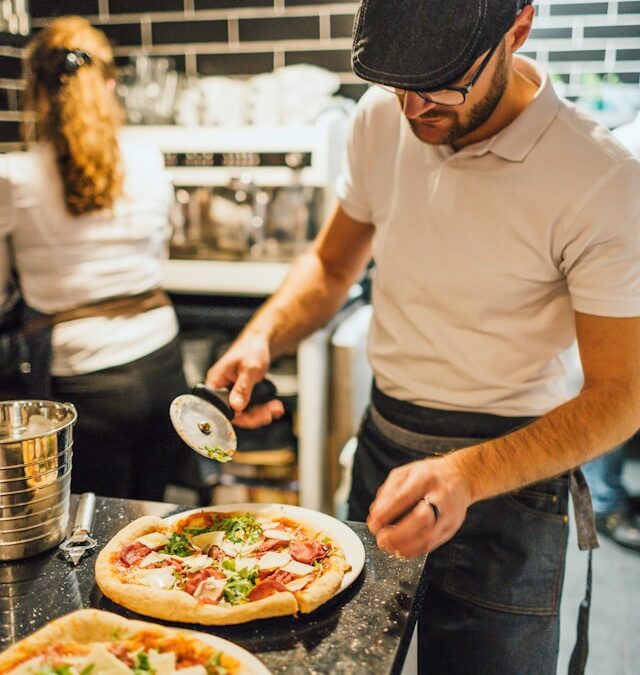Hunt Brothers Pizza – A Case Study in Finding the White Space
You know Domino, Pizza Hut, and Little Caesars. But I bet you’ve never heard of this $800MM pizza chain.
I love to study restaurants and how they distinguish themselves to consumers. As a food industry consultant who’s analyzed countless QSR and fast-casual concepts over the past two decades, I’m continually fascinated by businesses that succeed not through revolutionary innovation but by identifying and dominating overlooked market opportunities.
Hunt Brothers Pizza is a masterclass in this strategy. It has built an empire of over 7,800 locations by focusing on an untapped market that other pizza chains ignored.
This is a private company, but a reasonable estimate is that it generates between $400 and $800M in revenue.

Known facts:
- They have approximately 7,800 locations
- They operate in convenience stores
- They sell pizzas and wings primarily
- Located chiefly in rural/small-town markets
Making some reasonable assumptions based on my industry knowledge:
- Average pizza price: ~$8-10 for a whole pizza
- Daily pizza sales per location:
- Breakfast: 3-5 pizzas
- Lunch: 8-12 pizzas
- Dinner/Evening: 5-8 pizzas\
- Total: ~16-25 pizzas per day on average
Basic calculation:
- Low estimate: 16 pizzas × $8 × 7,800 locations × 365 days = $365 million annually
- High estimate: 25 pizzas × $10 × 7,800 locations × 365 days = $712 million annually
Additional revenue streams:
- Wings and other items (~15-20% additional revenue)
- Slice sales vs. whole pizzas
- Seasonal variations and promotions
Therefore, a reasonable estimate would put Hunt Brothers’ annual revenue between $400-800 million.

The Hunt family founded and still owns Hunt Brothers Pizza today. The company was established by Don Hunt and his three brothers, Lonnie, Jim, and Charlie Hunt. They started in 1962 in Evansville, Indiana, with a food distribution business called Pepe’s Pizza, which supplied ingredients to pizzerias.
In 1991, they launched Hunt Brothers Pizza as we know it today, focusing on the convenience store model. The transition from pizza ingredient distribution to their current business model came from recognizing the opportunity in convenience stores.
The company is still family-owned and operated and is now in its second generation. Scott Hunt, Don Hunt’s son, serves as CEO. The company is headquartered in Nashville, Tennessee.
What’s particularly interesting about their family ownership structure is how it’s helped them maintain their focus on their core business model. Unlike publicly traded companies that might face pressure to expand into new markets or diversify their offerings, Hunt Brothers has maintained its concentrated focus on the convenience store channel, which has been key to its success.
Understanding Rural and Small Towns
The genius of Hunt Brothers’ business model lies in their understanding of rural and small-town America’s retail landscape. While major pizza chains fought over prime real estate in urban and suburban areas, Hunt Brothers recognized that convenience stores in smaller markets already had something invaluable: steady customer traffic and established relationships with local communities.
Why does this model work so brilliantly?
Convenience stores, particularly in rural areas, serve as community hubs. They’re not just places to buy gas and groceries; they’re often the most frequently visited retail locations in town. Hunt Brothers saw what others missed: these stores had captive audiences but were underutilizing their space and missing opportunities to increase customer spending.
The company’s approach to partnership is particularly noteworthy. Rather than building standalone locations that require significant capital investment, Hunt Brothers offers convenience store owners a turnkey foodservice solution.
They provide the equipment, training, and marketing support while allowing store owners to operate the pizza program as part of their existing business. This dramatically reduces entry barriers for Hunt Brothers and store owners, enabling rapid expansion without the typical real estate and staffing challenges plaguing traditional pizza chains.
Their menu strategy also reflects deep market understanding. Instead of trying to compete with delivery-focused chains offering endless customization options, Hunt Brothers keeps it simple: a focused menu of pizzas and wings that can be prepared quickly by existing store staff. They recognized that in small towns, the priority isn’t endless variety – consistent quality and immediate availability.
The company’s “All Toppings No Extra Charge” position is simple.
It eliminates decision paralysis and creates a clear value proposition that resonates in price-sensitive markets. This approach also streamlines operations, reducing training requirements and improving the speed of service—crucial factors when your business operates within another company.
What’s particularly impressive about Hunt Brothers’ growth is how they’ve leveraged their unique position to create competitive advantages that are difficult for traditional pizza chains to replicate. Their presence in convenience stores means they can capture breakfast and lunch traffic – traditionally weak days for pizza businesses. They benefit from the foot traffic of people stopping for gas or other convenience items, effectively eliminating the marketing costs associated with driving initial visits.
Three Slices of Insights
Here are three key takeaways from Hunt Brothers’ success that any business can learn from:
1. Market Position Arbitrage
Hunt Brothers didn’t invent pizza or convenience stores.
They identified an underserved market segment where existing infrastructure (convenience stores) could be leveraged to deliver a highly demanded product. They saw that the economics of traditional pizza delivery wouldn’t work in many small towns, but a convenience store-based model could thrive.
2. Operational Simplicity as Strategy
By designing their business model around the constraints of convenience store operations, Hunt Brothers created a system that could scale rapidly without sacrificing quality or consistency. Their focused menu and standardized processes mean that stores can implement the program without hiring dedicated pizza staff – a crucial advantage in markets where labor can be scarce.
3. Partnership-First Growth Model
Instead of viewing convenience stores as competitors for food dollars, Hunt Brothers positioned themselves as partners in helping these stores increase their profitability. This collaborative approach has been key to their rapid expansion and high operator retention rates.
The Hunt Brothers’ story demonstrates that business success often comes not from creating something entirely new but from identifying and exploiting structural advantages in existing markets. They saw that convenience stores had several built-in advantages for food service—foot traffic, existing staff, and established locations—but lacked the expertise and systems to capitalize on these advantages effectively.
What’s particularly instructive about their approach is how they’ve maintained focus over time. While many food service businesses chase trends or continually expand their menus, Hunt Brothers has stayed true to their core model, focusing instead on optimizing execution and supporting their convenience store partners.
Lessons for Entrepreneurs
For entrepreneurs and business leaders, the lesson is clear: sometimes, the most significant opportunities lie not in disruption but in identifying and dominating market segments that larger competitors have overlooked or can’t efficiently serve. Hunt Brothers’ success shows that understanding and leveraging existing infrastructure and traffic patterns can be more valuable than product innovation alone.
As the food service industry evolves, Hunt Brothers’ model offers a compelling blueprint for growth through strategic positioning rather than product revolution. They’ve proven that success can come from changing where and how you sell rather than what you sell in an industry as competitive as pizza.
It’s a reminder that true business innovation often lies in the business model rather than the product itself.
Photo by Benu Marinescu on Unsplash
Connect with Jeff at The Marketing Sage Consultancy. Interested in setting up a call with me? Use my calendly to schedule a time to talk. The call is free, and we can discuss your brand and marketing needs.
If you want to learn more about my new offering, The Trusted Advisor Board, you can click here to learn the details. Feel free to email me at jeffslater@themarketing sage.com or text 919 720 0995. Thanks for your interest in working with The Marketing Sage Consultancy.






Jeff:
Being in the biz I am familiar with Hunt Brothers. An American family success story. Good summary. They were fortunate to get in on the C-store wave of offering more/better food than roller dogs with their pizzas. If they stay where they dominate they will ride the next C-store wave, technology:
where and how you sell rather than what you sell Technology will first drive consumers to pumps and then from pumps to stores.
Thanks for your insights, Jimmy. I was unaware of this brand, so I needed to write about it.